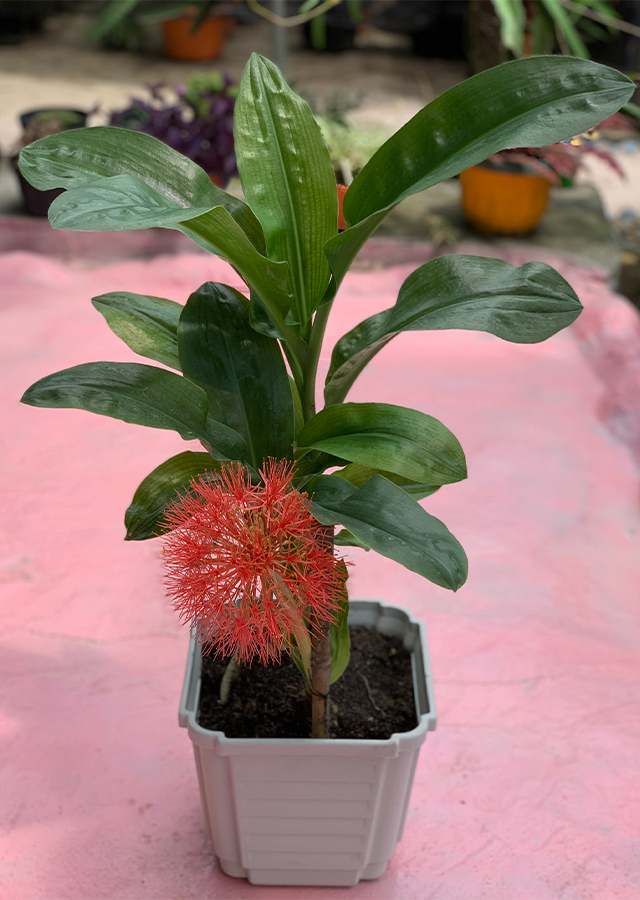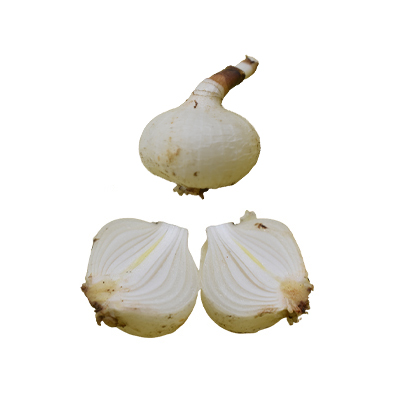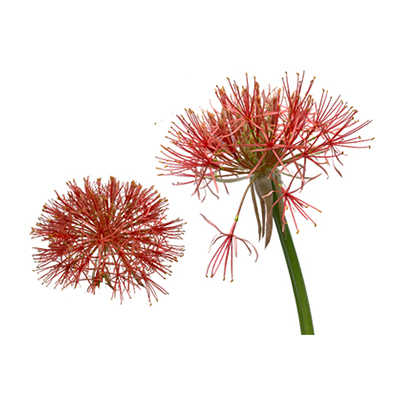Powderpuff Lily
Scadoxus multiflorus (Martyn) Raf.
Amaryllidaceae
Location in our garden
Green House



Synonym
Amaryllis multiflora (Martyn) Tratt.
Haemanthus multiflorus Martyn
Nerissa multiflorus (Martyn) Salisb.
Habitus
Herbaceous. An evergreen, bulbous perennial plant, herbaceous, geophyte, bulb variable in height of 15 to 120 cm
Part Used
Flowers
Pseudobulb
Growing Requirements
Need Shade
Habitat
Forest
Mountains
Grassland
Overview
Powderpuff lily is native to tropical and sub-tropical parts of South Africa. It is widespread throughout tropical Arabia.(Saudi Arabia, Yemen, Oman) and to the Seychelles. It is naturalized in Mexico and in the Chagos Archipelago (Indian Ocean). It is grown as an ornamental plant for its brilliantly coloured flowers, either in containers or in the ground in where the climate is suitable.
Vernacular Names
Bloedblom (Afrikaans), Hồng tú cầu (Vietnamese)
Agroecology
H. multiflorus is not frost-hardy and must be kept at a minimum temperature of 5 °C. An open, well-drained growing medium, largely organic in nature, is recommended. It can be grown in the open garden in the shade, in well-drained, light soil containing plenty of organic matter. It requires ample water when in growth but must have good drainage when dormant. It will grow under trees provided the soil is sufficiently fertile.
Morphology
- Roots - fibrous, cylindrical and white.
- Stems - rhizomatous bulb, pseudostems.
- Leaves - the bases of the leaves, the stalks or petioles, are tightly wrapped together to form a pseudostem or false stem, 5–60 cm.
- Flowers - red, the umbel of flowers is more-or-less globe shaped, with from 10 to 200 individual flowers, filaments of the stamens and the style are all scarlet, fading to pink. The bases of the tepals are fused to form a cylinder-shaped tube,
- Fruits - a berry, 5–10 mm.
Cultivation
Propagation is by seed and offsets. The seed should be sown as soon as it is ripe. Use a well-drained, light potting mix, press the seed gently into the soil, do not cover it but leave the tops just visible or level with the soil surface. Keep damp but not waterlogged. Offsets should be removed after flowering i.e. in autumn, and replanted immediately.
Chemical Constituents
Alkaloids, saponin, flavonoid, polifenol, phenolic glycoside.
Traditional Medicinal Uses
Medicinal Uses
- The bulb is used in ear and skin treatments, lactation stimulants, and vermifuges.
Traditional Uses
- It is used for urinary tract infections
- The bulbs are used by traditional healers to cleanse the blood and to treat infected sores and acne.
- In Nigeria, it is used as ointment for treating ulcers and as a stimulant in debility.
- The crushed bulb is applied to serious wounds in Gabon.
- In Ivory Coast the crushed plant is applied in topical frictions to weakly children.
- In Tanganyika the dried bulb is rubbed over scarifications on the breasts to promote milk-flow, and the sap is said to raise swellings on the lips and tongue. A decoction of the bulb is taken for hookworm, and the sap is instilled into the ear for earache.
Part Used
Reference Sources
- Plantz Africa. (2001). Scadoxus multiflorus subsp. katharinae. http://pza.sanbi.org/scadoxus-multiflorus-subsp-katharinae#:~:text=The%20bulb%20is%20also%20used,Scadoxus%20multiflorus%20subsp. 12-01-2021.
- The Plants Garden. (2019). Haemanthus: Care Of Varieties Albiflos, Scadoxus Katherinae, Multiflorus. https://theplantsgarden.com/houseplants/bulbous_plants/haemanthus.html. 14-09-2020..
- The Encyclopedia of Bulbs. (2013). https://www.llifle.com/Encyclopedia/BULBS/Family/Amaryllidaceae/32417/Haemanthus_multiflorus. 12-01-2021
- World of Succulent.(2019). Scadoxus multiflorus (Blood lily). https://worldofsucculents.com/scadoxus-multiflorus-blood-lily/. 14-09-2020.
- Yokosuka, A.,Suzuki, N., Mimaki, Y. (2017).Chemical constituents of the bulbs of Haemanthus multiflorus. https://www.sciencedirect.com/science/article/abs/pii/S1874390017301027. 14-09-2020.

